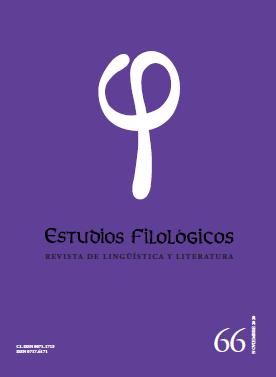Moving the fences around the testimony: rewriting the genre from the factitious pact and the medial voice of the journalist/narrator
Main Article Content
Abstract
In the present article, the first of an extensive project about the contemporary Chilean and Venezuelan testimonial genre, an approach to this format will be sought from four texts that have been read as journalistic researches: El despertar de los cuervos. Tejas verdes, el origen del exterminio en Chile (2013) by Javier Rebolledo, Ingrid Olderock, La mujer de los perros (2014) by Nancy Guzmán, El grito ignorado (2012) by Ibéyise Pacheco and Abril golpe adentro (2009) by Ernesto Villegas. For this, two registers will be used: the presence of the element of faction, which alludes to the elaboration of a narrative plot and to the problematization of its witness characters, with which would be linking structure and content; and the participation of the voice of a journalist / narrator into the testimony. Theoretical supports will be based on the notions raised by some authors, such as Albert Chillón, Roland Barthes, Nora Strejilevich and Carolina Pizarro-Cortés, among other.

